(CYANOMETHYL)TRIPHENYLPHOSPHONIUM CHLORIDE
Synonym(s):NSC 92174
- CAS NO.:4336-70-3
- Empirical Formula: C20H17ClNP
- Molecular Weight: 337.78
- MDL number: MFCD00031672
- EINECS: 224-383-0
- SAFETY DATA SHEET (SDS)
- Update Date: 2023-04-23 13:52:06
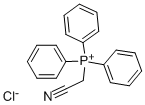
What is (CYANOMETHYL)TRIPHENYLPHOSPHONIUM CHLORIDE?
Chemical properties
off-white crystalline powder
The Uses of (CYANOMETHYL)TRIPHENYLPHOSPHONIUM CHLORIDE
Reactant involved in:
- Condenation reactions
- Wittig reactions
- Synthesis of phosphonium-iodonium ylides
- Preparation of α,β-unsaturated esters, amides, and nitriles
What are the applications of Application
(Cyanomethyl)triphenylphosphonium chloride is a versatile reactant
Properties of (CYANOMETHYL)TRIPHENYLPHOSPHONIUM CHLORIDE
| Melting point: | 268-270 °C |
| storage temp. | Inert atmosphere,Room Temperature |
| form | solid |
| color | White to Almost white |
| Water Solubility | very faint turbidity |
| Sensitive | Hygroscopic |
| BRN | 6222047 |
| CAS DataBase Reference | 4336-70-3(CAS DataBase Reference) |
Safety information for (CYANOMETHYL)TRIPHENYLPHOSPHONIUM CHLORIDE
| Signal word | Warning |
| Pictogram(s) |
 Skull and Crossbones Acute Toxicity GHS06  Exclamation Mark Irritant GHS07 |
| GHS Hazard Statements |
H301:Acute toxicity,oral H302:Acute toxicity,oral H312:Acute toxicity,dermal H315:Skin corrosion/irritation H319:Serious eye damage/eye irritation H331:Acute toxicity,inhalation H332:Acute toxicity,inhalation H335:Specific target organ toxicity, single exposure;Respiratory tract irritation |
| Precautionary Statement Codes |
P261:Avoid breathing dust/fume/gas/mist/vapours/spray. P264:Wash hands thoroughly after handling. P264:Wash skin thouroughly after handling. P270:Do not eat, drink or smoke when using this product. P280:Wear protective gloves/protective clothing/eye protection/face protection. P304+P340:IF INHALED: Remove victim to fresh air and Keep at rest in a position comfortable for breathing. P305+P351+P338:IF IN EYES: Rinse cautiously with water for several minutes. Remove contact lenses, if present and easy to do. Continuerinsing. P405:Store locked up. P501:Dispose of contents/container to..… |
Computed Descriptors for (CYANOMETHYL)TRIPHENYLPHOSPHONIUM CHLORIDE
| InChIKey | ARPLQAMUUDIHIT-UHFFFAOYSA-M |
New Products
Tert-butyl bis(2-chloroethyl)carbamate (S)-3-Aminobutanenitrile hydrochloride N-Boc-D-alaninol N-BOC-D/L-ALANINOL N-octanoyl benzotriazole 4-Hydrazinobenzoic acid 3,4-Dibenzyloxybenzaldehyde Electrolytic Iron Powder 1,1’-CARBONYLDIIMIDAZOLE R-2-BENZYLOXY PROPIONIC ACID 4-HYDROXY BENZYL ALCOHOL 1,1’-CARBONYLDI (1,2-4 TRIAZOLE) S-2-CHLORO PROPIONIC ACID (2-Hydroxyphenyl)acetonitrile 4-Bromopyrazole 5-BROMO-2CYANO PYRIDINE 5,6-Dimethoxyindanone 5-broMo-2-chloro-N-cyclopentylpyriMidin-4-aMine 3-(Hydroxymethyl)benzoate N-Boc-2-chloroethylamine 1-Bromo-2-methoxy-3-nitrobenzene N-Methyl-3-cyclopenten-1-amine 2-Bromo-3-hydroxybenzaldehyde 1H-indazole-5-carboxamideRelated products of tetrahydrofuran
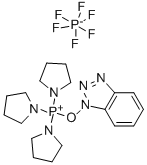
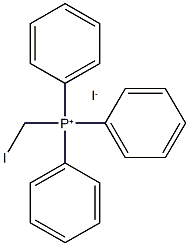
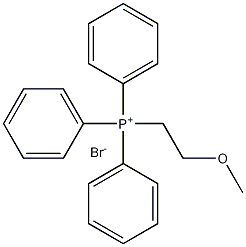
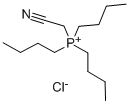
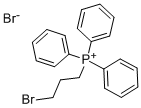
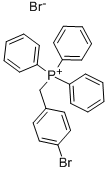
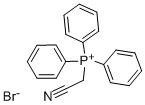
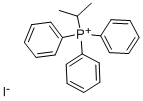
You may like
-
 (Cyanomethyl)triphenylphosphonium Chloride CAS 4336-70-3View Details
(Cyanomethyl)triphenylphosphonium Chloride CAS 4336-70-3View Details
4336-70-3 -
 Cyanomethyl triphenylphosphonium chloride 95% CAS 4336-70-3View Details
Cyanomethyl triphenylphosphonium chloride 95% CAS 4336-70-3View Details
4336-70-3 -
 (Cyanomethyl)triphenylphosphonium chloride CAS 4336-70-3View Details
(Cyanomethyl)triphenylphosphonium chloride CAS 4336-70-3View Details
4336-70-3 -
 7441-43-2 98%View Details
7441-43-2 98%View Details
7441-43-2 -
 1260741-78-3 6-Bromo-3-iodo-1-methyl-1H-indazole 98%View Details
1260741-78-3 6-Bromo-3-iodo-1-methyl-1H-indazole 98%View Details
1260741-78-3 -
 4-bromo-3,5-dimethylbenzenesulfonyl chloride 1581266-79-6 98%View Details
4-bromo-3,5-dimethylbenzenesulfonyl chloride 1581266-79-6 98%View Details
1581266-79-6 -
 2490430-37-8 98%View Details
2490430-37-8 98%View Details
2490430-37-8 -
 N-(5-Amino-2-methylphenyl)acetamide 5434-30-0 98%View Details
N-(5-Amino-2-methylphenyl)acetamide 5434-30-0 98%View Details
5434-30-0
Statement: All products displayed on this website are only used for non medical purposes such as industrial applications or scientific research, and cannot be used for clinical diagnosis or treatment of humans or animals. They are not medicinal or edible.